There is a variety of different artificial bouldering holds for an indoor gym to mimic the outdoor climbing environment. Outdoor climbing is hard to come by near me so an indoor gym is the next best thing. An indoor rock climbing gym provides the weekly fix for my climbing obsession until I get a free weekend for a road trip. Learning the different holds, recognize them, and practice them help improve my climbing techniques as well as finding my weak point where I can improve upon.
Some of the different holds are jugs, crimps, slopers, pockets, edges, pinches, volume, foot chips, and cracks.
Jugs and mini jugs

T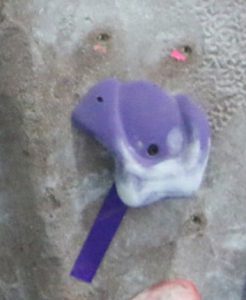 he jug and mini jug holds are my favorites. They have a big ridge or a nice texture surface that my whole hand and sometimes both hands can wrap around. It is derived from the expression “jug-handle”. It is also known as a positive hold which refers to the degree of concavity according to wikepedia.org. Jugs are used often for beginner routes and sometimes steep walls or overhangs. The mini jugs are similar to the jugs but usually smaller in size. They are also great holds.
he jug and mini jug holds are my favorites. They have a big ridge or a nice texture surface that my whole hand and sometimes both hands can wrap around. It is derived from the expression “jug-handle”. It is also known as a positive hold which refers to the degree of concavity according to wikepedia.org. Jugs are used often for beginner routes and sometimes steep walls or overhangs. The mini jugs are similar to the jugs but usually smaller in size. They are also great holds.
Crimps
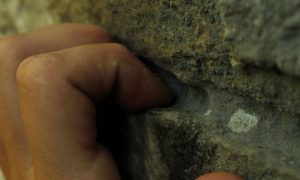
Crimps are small holds with a slight positive edge. Most of the time, it is deep enough for the tips of my fingers. Small hands have great advantages for more surface on these holds. I can grip most crimps with my hands. It is definitely a challenge for bigger hands. Crimping is a rock climber terminology to grab on to a crimp with your fingers. Your hand is in a close grip with all the fingers except the thumb touching each other tightly. It’s almost like a vice grip hook with your fingers.
This grip definitely helps strengthen your finger strength. A balanced feet and body are also helpful so you do not rely on your crimp hold to hold up all your body weight.
Slopers
Sloper holds are my least favorites. I am weakest when comes to the handgrip. It requires an open hand grip to grab as much surface as you can. Smaller hands are at a disadvantage.
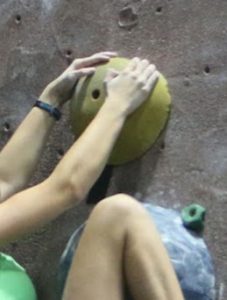
The slopers are typically round like grapefruit shapes. It reminds of female large size breasts. I call it the booby route. There are smaller as well as larger sizes and different shapes. Generally, there is very little to no ridges on the surface so it is harder to grab onto. Chalk is your best friend when it comes to slopers. It generates a little more friction to your grab. Slopers are found usually in a climbing grade of 5.10 and up.
Pockets
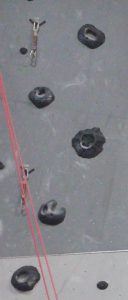
Pockets are holds with a small pocket opening, sometimes big enough for two to three fingers to fit and other times small enough for only one finger. The pockets can be deep or shallow. It is easy to hurt your fingers in a small pocket hold. You can accidentally twist it or get it stuck. Chalk is again your friend in this hold. It’ll help with the friction as well as sliding your fingers in and out much easier.
Edges
Edges are holds with one flat surface on one side. It can be position vertically or horizontally.
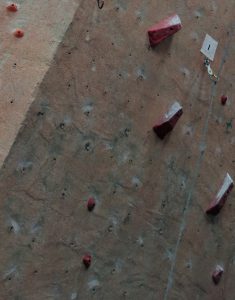
The side edges are usually shallow but big enough sometimes for your fingers to grab. It is almost similar to a crimp but no lip or ridges. Using your arms and body to counterbalance against an edge is very helpful.
Pinches
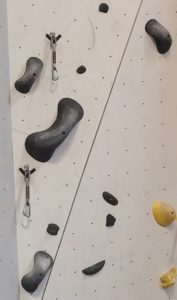
Pinches are holds that have two sides opposite from each other and your hand can grab on like a pinch using your thumb on one side and the rest of your fingers on the side of the hold. The pinches vary in size. The medium size pinch is the best size for the hands. Sometimes, the smaller ones are more challenging depending on the size of your hands.
Volumes
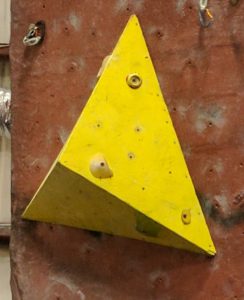
The volumes are usually large types of holds that smaller holds can be attached to. The volumes can be in a variety of shapes such as a pyramid, cylindrical, or oval. Some volumes are coarse in texture similar to sandpaper while others can be smooth. You can take advantage of the volume like an edge hold if the route that you are climbing is also on the volume.
Foot Chips
Foot chips are little holds that are commonly used for footholds. However, they can be used as little hand crimps for more advanced routes. This hold requires strength and technique and could cause strain on the joints and tendons. Climb with care and awareness.
Cracks
Cracks are usually not holds. It is a crack along a surface of the wall which a climber can definitely take advantage of if it is in the designated route. 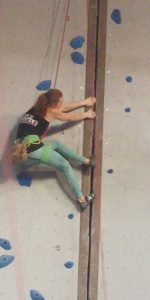 You use the crack as an edge or a crimp to help pull yourself up or sideways. Cracks are not common on all routes. It is usually used for more advanced routes grading 5.10 or higher.
You use the crack as an edge or a crimp to help pull yourself up or sideways. Cracks are not common on all routes. It is usually used for more advanced routes grading 5.10 or higher.
I hope you find this article useful and helpful. I would love to hear your point of view. Please leave a comment or suggestion below.


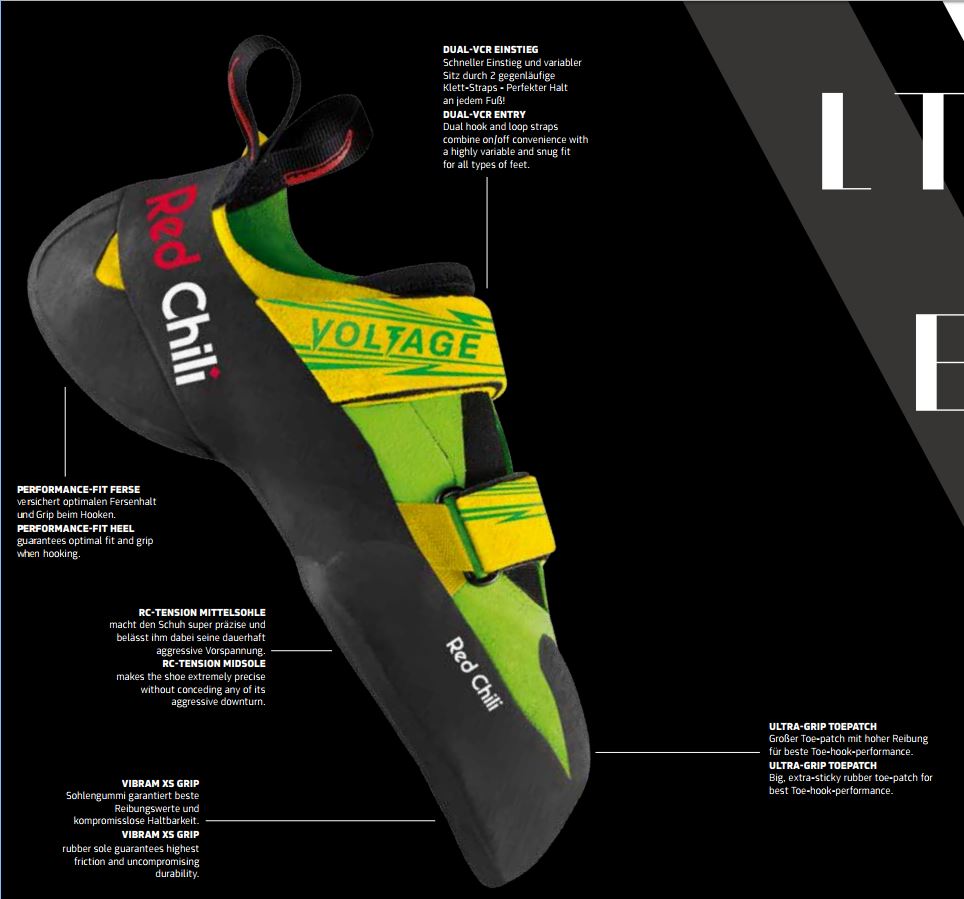
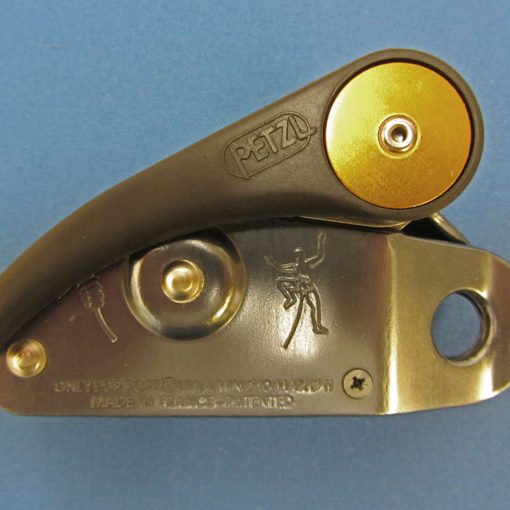

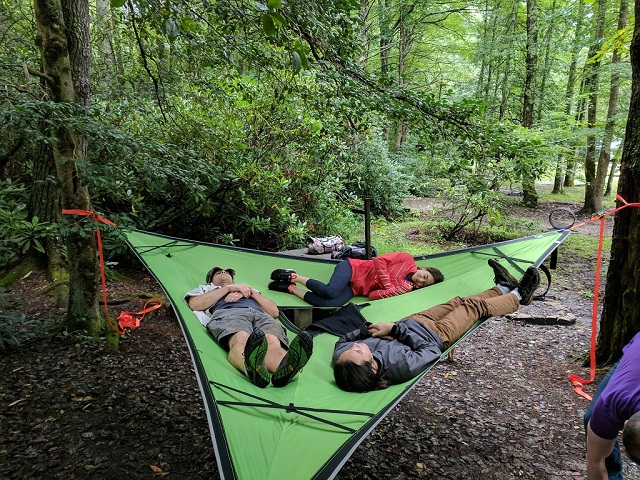
2 thoughts on “What are the Different Bouldering Holds and How to Work with Them?”
Wow I never even realized all those little snubby things used for rock climbing had funny little names for them. Your site has really great info for newbies like myself. Whenever I see professional rock climbers, I see that they are so fit and muscular. Are there other exercises that help you get ready to climb? I am also trying to get my wife to try, but her fear heights has been hard to overcome. Any ideas on overcoming that fear?
Thank you Charlie for your comment. Yes, there are exercises that help you to climb. I am writing more articles and that will be on my list but for now here are a few you can work on: hang from a bar for 30 seconds and then 45 seconds and then 1 minute… Set the timer longer as you get stronger. Work on your abs such as sit ups or while hanging on a bar lift up your legs. Start with 5 leg lifts and then 10 and so on… Those are a few you can start with. More to come in my new articles. My latest article was “How to Overcome Fear of Falling – Seven Tips for Beginning Climbers” – https://rockclimbingforwomen.com/how-to-overcome-fear-of-falling-seven-tips-for-beginning-climbers. It deals with fear in general as well… Hope that helps.